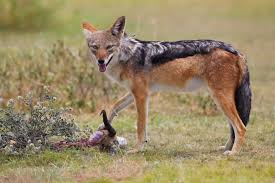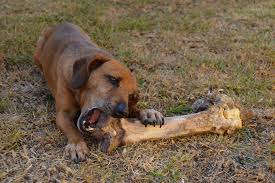 Do You Trust Your Dog Food? There Are Choices … (BARF)
Do You Trust Your Dog Food? There Are Choices … (BARF)
Many dog owners, unhappy with their current food, are beginning to explore the benefits associated with a raw dog food diet (BARF – Bone And Raw Food). There has been a definite upswing in this market, as pet owners are becoming more and more educated in maintaining the overall health of their four-legged companions. Some owners, simply don’t trust the nutritional ingredients contained in their dog food, and are looking for alternatives. Okay, what is raw dog food? Basically, raw dog food is centered around and highlights the following ingredients:
- Raw Meat
- Vegetables
- Fruits
- Bones
Benefits and Risks … Things To Consider
According to Australian veterinarian Ian Billinghurst, “adult dogs would thrive on an evolutionary diet based on what canines ate before they became domesticated: Raw, meaty bones and vegetable scraps. Grain-based commercial pet foods, he contended, were harmful to their health.” Let’s examine this idea a little further.
Like any new concept or idea, there are those who would dispute this concept and conclude that a raw dog food diet may not be the best choice. Others, who firmly believe in what Dr. Billinghurst has stated above is accurate, will point out the benefits associated with a raw food diet. The benefits of a raw food diet are listed below:
Benefits
- Increase in energy levels
- Healthier, cleaner teeth as a result of bones within the diet

- Healthier skin and coats
- Smaller stools
- Better digestion
Not too bad, huh? Those who would refute the benefits of a raw dog food diet would argue that the risks simply outweigh the rewards. Many pet owners, although unhappy with commercial brands of dog food, are just too skeptical when it comes to changing to a raw food diet. Here are a few of the concerns related to a raw food diet:
Risks
- Bacterial contamination ( Always a possibility with raw meat – in humans)
- Consumption of bones ( choking, splintering, internal damage)
- Concerns with an unbalanced diet
- No guidelines for vitamin and/or mineral requirements

Advocates of a raw dog food diet seem to believe that these risks are worth taking and feel confident with this approach. Doug Knueven, a DVM, of the Beaver Animal Clinic in Beaver, Pennsylvania states the following, ” The whole concern about bad bacteria is overblown,” Knueven says. “When people are feeding a raw diet they know it’s not sterile, they’re more careful about washing their hands. Feeding a raw meat diet is no different than cooking chicken for the family … you have to clean up the counter and your knife.” In essence, deciding on a raw food diet comes with some responsibility for you, as the owner.
Is A Raw Dog Food Diet Right For You And Your Dog?
My purpose in this article is not one of persuasion. I am not suggesting that a raw diet, or a traditional commercial feed is better than the other. Hopefully, some of the information presented to you will help you make an educated decision when it comes to the health of your pet. Every dog is different, so any decision you make, must be in best interest of you and your four-legged companion. If you decide that a raw diet would be beneficial to your dog, I will provide a checklist that you may want to consider:
- Choose one meat item, and stay with that for awhile (easier on dog’s digestive system)
- Limit and or avoid treats during the transition process
- Supply your pet with plenty of fresh, accessible water
- Transition for older dogs should be done gradually (may take a bit longer for a healthy transition)
- Closely monitor your dog’s process and any changes (weight loss or gain, skin, fur, stool, etc.)
- Always consult your veterinarian before the transition process takes place
Raw Food Ingredients … Are They Nutritional?
Let’s now break down the ingredients that make up a raw food diet as well as the nutritional value they supply. Keep in mind that raw dog food is produced by a number of companies, and therefore all ingredients within the food may not be the same for each. For the purpose of this article, let’s focus on the four ingredients listed above:Meat – ( Beef, chicken, turkey, lamb, fish, duck )
1. Meat – ( Beef, Chicken, Lamb, Turkey, Fish, Duck )
Nutritional Value – Protein, amino acids which are essential to your dog’s overall health.
2. Vegetables – ( Broccoli, Celery, Carrots, Green Beans )
Nutritional Value – Vitamins A, B and C, Fiber, Nutrients and Antioxidants
3. Fruits – ( Apples, Oranges, Peaches, Pears, Blueberries )
Nutritional Value – Antioxidants, Fiber, Vitamins C and K, Potassium
4. Bones – ( Ground up to be safe )
Nutritional Value – Calcium, Phosphorus, Dental
Keep in mind that not all fruits and vegetables are good for your pet. Those mentioned above are indeed safe, but such things as seeds and/or cores should be removed before serving. A good idea is to use fruits as a treat for your canine, serving in small bite forms. Bones should be ground up before serving, to avoid any splintering during the chewing and swallowing process. Just use common sense, serve in moderation, and pay attention to your dog’s behavior.
I hope this article has provided you with some pertinent information and insight in regards to a raw dog food diet. As mentioned earlier, you must make this decision based on the needs and health of your pet. Be sure to consult and carry on a dialogue with your veterinarian and/or an animal nutritionist before making this important decision. To your dog’s health! Thank you for stopping by and please feel free to leave a question or comment below.

0 Comments